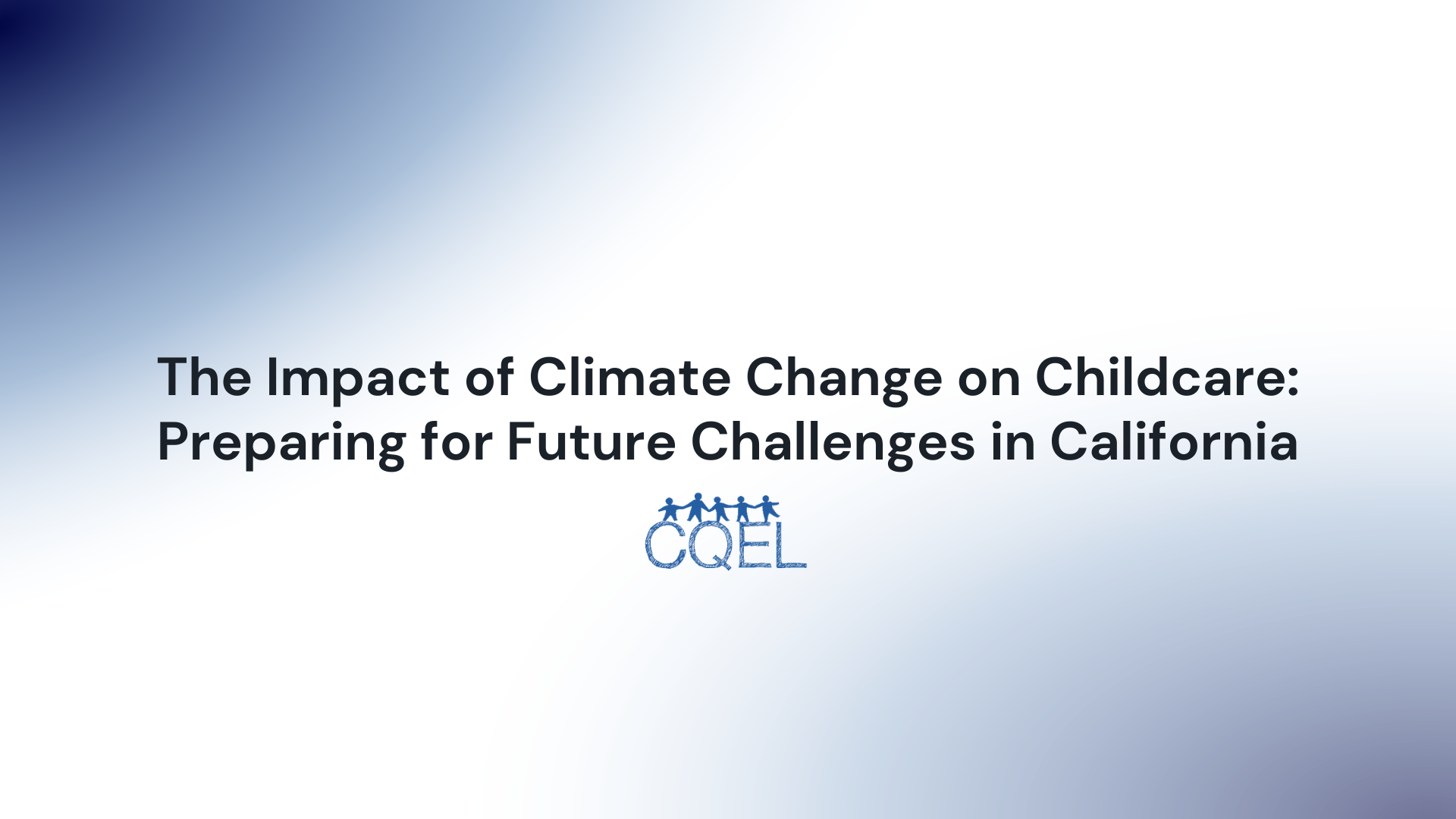The Impact of Climate Change on Childcare: Preparing for Future Challenges in California
This article will explore how climate change impacts childcare and offer insights on how to prepare for the future.

Climate change has emerged as a pressing issue in recent years, and its effects are far-reaching, seeping into every facet of our lives, including the childcare sector. For childcare providers in California, it is critical to understand and prepare for the challenges that climate change brings. This article will explore the ways in which climate change impacts childcare and offer insights on how to prepare for the future.
Effects of Climate Change on Children: Children, particularly those in the early years, are among the most vulnerable to climate change. The rise in temperature extremes, air pollution, and natural disasters such as wildfires and flooding, can affect children's health, safety, and wellbeing. These changes can cause physical health issues like heat-related illnesses and respiratory problems, increase mental health issues due to the stress of natural disasters, and disrupt educational continuity.
Incorporating Climate Education: To prepare children for the future, climate education should be a component of early childhood education. Teaching children about climate change, its impacts, and what they can do to help can empower them to be part of the solution. Resources like the California Education and Environment Initiative Curriculum provide age-appropriate materials for educators to use.
Building Climate Resilient Infrastructure: Climate resilient infrastructure is essential to withstand the impacts of climate change. This means ensuring that the childcare facilities are equipped to handle heatwaves, floods, and other climate-related events. This can be accomplished through measures like installing cooling systems, implementing flood protection measures, and creating evacuation plans for emergencies. The California Adaptation Planning Guide can assist in creating a climate resilience plan.
Promoting Health and Safety: Protecting children's health and safety in the face of climate change is paramount. This requires measures like monitoring air quality, ensuring hydration during heatwaves, and supporting children's mental health during and after natural disasters. The California Department of Public Health's Climate Change and Health Profile Reports offer guidance on safeguarding health in a changing climate.
Strengthening Partnerships: Building strong partnerships with parents, local communities, emergency services, and public health departments can help childcare centers better respond to the challenges of climate change. These partnerships can facilitate information sharing, resource pooling, and coordinated action during emergencies.
Climate-Friendly Practices: Childcare centers can also contribute to mitigating climate change by adopting sustainable practices. This can include measures like reducing waste, using energy-efficient appliances, and incorporating nature-based play. Resources such as the Green Child Care Program from the California Department of Public Health provide guidance on greening your childcare center.
Building a Climate-Resilient Childcare Sector: While climate change presents significant challenges for childcare in California, it also offers opportunities to build a more resilient, sustainable, and equitable childcare sector. By understanding the impacts of climate change and taking proactive steps to adapt, we can ensure that our childcare centers remain safe, healthy, and nurturing environments for all children, today and in the future.
